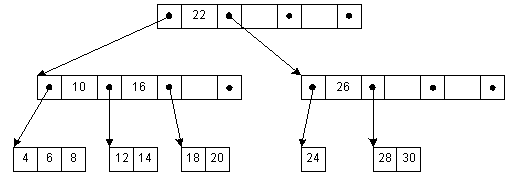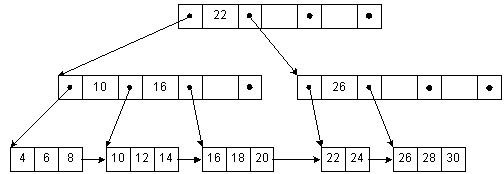Slide 1.12: Hashing
Home

|
Slide 1.10: AVL trees and B-trees Slide 1.12: Hashing Home |

|
| For example, all keys less than 22 are to the left and all keys greater than 22 are to the right. |

|
a B-tree in which keys are stored in the leaves.The figure below shows a B+ tree where all keys are stored at the leaf level, with their associated data values. Duplicates of the keys appear in internal parent nodes to guide the search. The left pointer designates all keys less than the value, while the right pointer designates all keys greater than or equal to the value.
| For example, all keys less than 22 are on the left, and all keys greater than or equal to 22 are on the right. |

|